To visit South America’s indigenous Koreguaje tribe — and see the destruction that has been wrought upon it — you need to start in the southwestern Colombian city of Florencia.
Arriving by air in Florencia, which is the capital of Caquetá Department, gives you a panoramic view of the region’s near-total conversion from Amazon rainforest to cattle pasture. Only a few pockets of forest remain, surrounded by urban sprawl and agriculture.
The profound effects of this mass deforestation become even more evident when traveling by land and river deeper into Caquetá.
Along the Orteguaza River, from Puerto Arango down to the Caquetá River — a journey of about 55 miles — grasslands and cows dominate what was once forest. The degradation of the land, waterways and riverbanks is evident everywhere you look, and the lack of consciousness of this damage can feel demoralizing.
Caquetá itself is a microcosm of Colombia’s most pressing social and environmental problems. Land is power in Colombia, and the thirst for land in Caquetá has been the main driver behind conflict and deforestation for decades.
The seeds of mass land conversion and conflict in the department (Colombia’s equivalent of a state) were planted with abandoned development projects that encouraged migration to the Amazon frontier in the 1960s. Since then the landscape has been entirely transformed by pastures and coca plantations. Coca, the base ingredient for cocaine, is a sacred medicinal plant to many South American tribes, including the Koreguaje, who call it “hipie.”
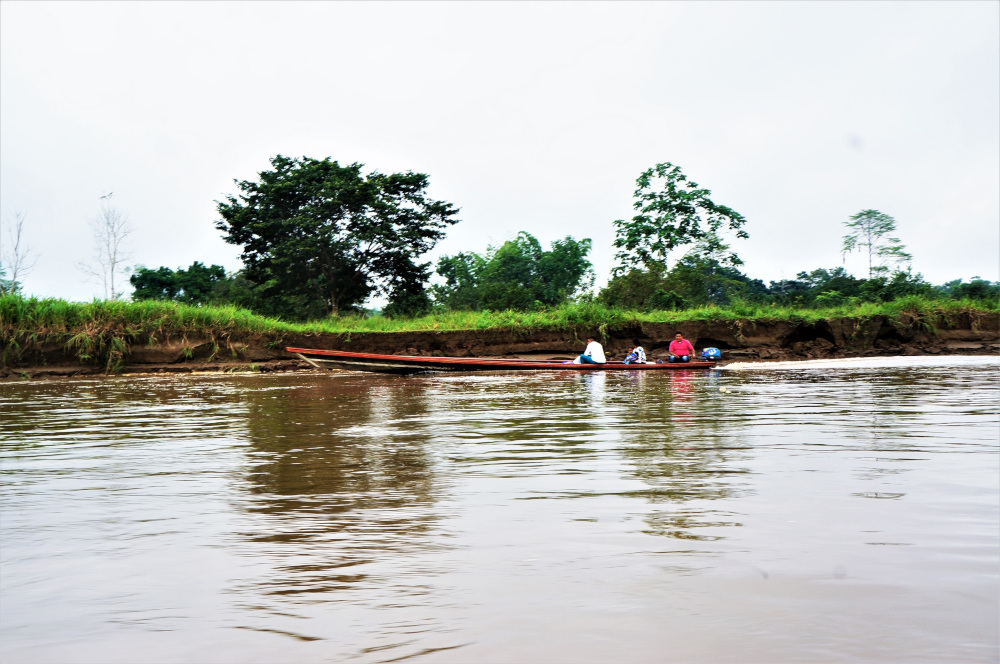
And matters are only going to get worse. Recent concessions granting additional development rights to oil companies now threaten to degrade the land, water and local communities even further. Meanwhile illegal gold mining has become pervasive throughout the Amazon, with some of the worst destruction concentrated in the Colombian Amazon along the Caquetá River Basin.
Much of this destruction starts on a small scale before ballooning out of control.
“Laws for land titling and wealthy landowners encourage poor smallholder farmers to clear land to eventually consolidate into large ranches,” Amazon deforestation expert Dr. Dolors Armenteras told me recently. As a result around 1% of landowners in Colombia hold 81% of “productive” land.
The process often begins with land grabs and fires, which portend mass-scale land conversion along new and expanding frontiers of deforestation. Insecure land tenure and negligent state enforcement even allow this process to occur within protected national parks and indigenous territories.
“The result is the transformation of nominally public forests into private, forest-free landholdings,” Armenteras and co-authors wrote last year in Nature.
Deforestation rates have skyrocketed in Caquetá since the 2016 Colombian peace accords, even in designated indigenous reserves and protected national parks. As a result Caquetá is now the Colombian Amazon’s most active deforestation frontier.
And also one of its last lines of defense.
The Koreguaje Tribe and the Orteguaza River
The area along the Orteguaza is the current home of the Koreguaje tribe, a proud and deeply threatened ethnic group whose ancestral territories stretched all the way to Florencia.
The Koreguaje see themselves not just as protectors of the forest, but part of it. They refer to themselves and their still-widely spoken language as “Korébajü,” which is interpreted through their worldview as “people of the earth.”
It’s a testament to their resilience that they’ve been able to preserve their language this long, as indigenous languages are severely to critically endangered in many parts of Colombia and South America.
Despite this long history and success in preserving their culture, today fewer than 2,000 Koreguaje endure in their territories following a painful history of forced enslavement, Christianization, land grabbing and displacement dating back to the 18th century.
Smaller populations of Koreguaje live in the slums of Florencia and Bogotá, where they fled after the cocaine trade brought deforestation, aerial glyphosate spraying, assassinations and forced displacement to their homelands in the early 1990s — all occurring within the context of Colombia’s prolonged civil war. This violent “epoch of the coca” lasted until the mid-2000s. Many of the members of this diaspora have unsuccessfully petitioned to reclaim land that was lost.
I’ve worked with the Koreguaje for nearly four years, on projects ranging from water quality to food security, alternative energy and income sources, and the transmission and preservation of traditional knowledge. Their situation urgently needs more attention — not just for their sakes, but to protect an ecologically vital section of the Colombian Amazon.
What remains of Koreguaje territory now represents some of the only standing forest along the degraded Orteguaza River, though their ability to keep living off the land and river has been seriously compromised.
The Koreguaje have traditionally survived on fishing, a rotational form of subsistence slash-and-burn agriculture common to Amazonian tribes known as “chagras,” and occasional hunting. Seasonally flooded palm-tree forests known as “cananguchales” along the Orteguaza and the less voluminous Peneya River are at the center of traditional Koreguaje health and culture.
But these bodies of water and the many fish that spawn within them are disappearing. Fish throughout the region are also contaminated with mercury from illegal gold mining, and the reduction of ancestral territories following conflict and deforestation has greatly diminished the food available from chagras and hunting.
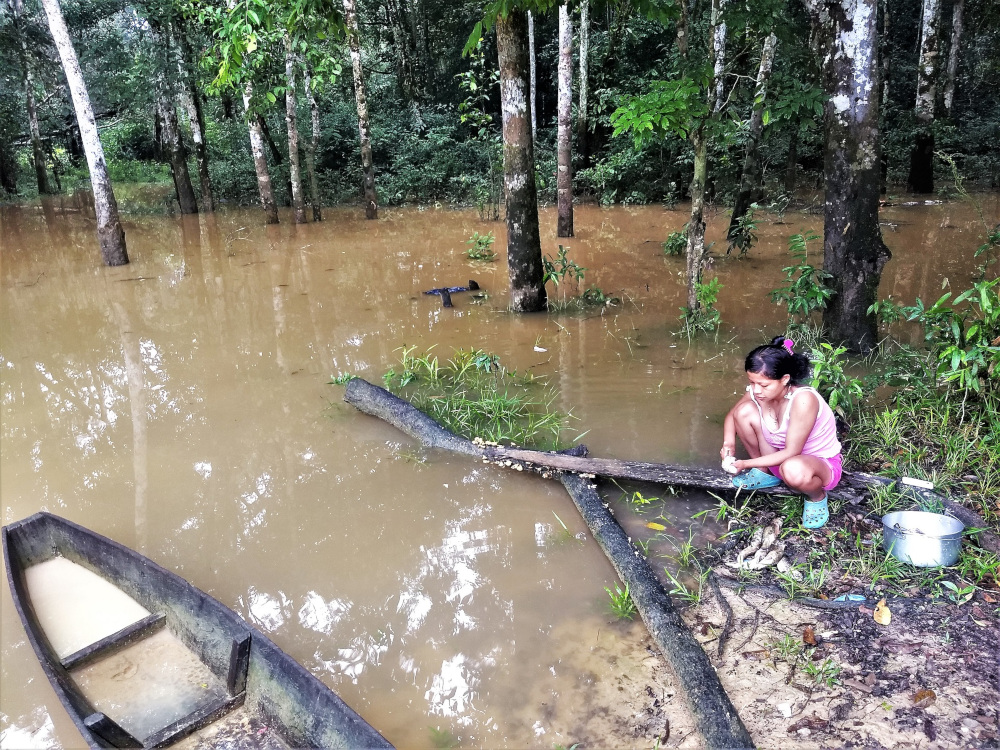
It’s not only the Koreguaje who are at risk from the destruction of their surrounding ecosystems, including the Andean-Amazonian Piedmont. According to geographer Juan Gonzalez, who worked for years along the Orteguaza studying sediment flow and soil erosion, the river “serves as a confluence of different water types that are critical to the integrity of communities and ecosystems tens to thousands of kilometers downstream.”
Neglected Guardians
Through all of this, the Koreguaje and neighboring Muina-Murui (“Huitoto”) communities that live along the Caquetá River have remained “guardians of the forest” in this highly threatened, important part of the Northwest Amazon.
I spoke with Koreguaje leader Oliver Gasca last year while in his reserve.
“We know our territory,” he told me emphatically. “We know how to live here, what animals to eat, how to raise a family, and we respect our land and the Mother Earth. Look all around this region. It is pasture and dying land. Now look at us. We are the only ones with trees, and we keep losing more land and people.”
Despite their moderate success in protecting local forests, the Koreguaje’s rights and holistic worldviews continue to be neglected.
As Gasca recounted: “White people come and tell us what we need to do: We need to stop hunting because the animals are disappearing. We need to stop fishing because the fish are contaminated with mercury from gold mining. We need to stop working our chagras, we need to stop having many children because there is not enough food and territory for them and we need to stop using our traditional plants when we are sick…
“This all used to be our home and we were strong and the forest was strong. And people come here and tell us what we need to do after they caused all of these problems with their Western worldviews? They need to listen. We will go extinct — and so will the forest without us.”
While Gasca’s feelings — which echo those of many indigenous leaders — are entirely justifiable, that categorical “us against them” perspective has the potential to change. There are people listening, and there are tools, initiatives and global movements gaining momentum that recognize the importance of indigenous rights and distinct worldviews.
Importantly, Colombia also has a legal structure that supports strong environmental and indigenous rights to life, health, education, autonomy and territory, although in practice these rights are consistently ignored or violated. In fact, it’s a running joke among those trying to improve the situation that Colombia is “a lawless country with the best laws in the world.”
But the legal framework for protecting and preserving the Koreguaje culture and territory remains in place, and international pressure and support are likely needed to ensure its effectiveness and accountability.
Global Movements and Agreements
The “Guardians of the Forest” paradigm recognizes indigenous communities as stewards of the immense biodiversity and “ecosystem services” of tropical forests, and it’s easy to see why.
Globally, indigenous communities manage at least 300 billion metric tons of carbon within their forested territories, above- and belowground. Indigenous territories also contain approximately 80% of the world’s biodiversity. Evidence from around the world has shown that indigenous communities with secure rights and tenure to their collectively held lands have extremely low rates of deforestation and land degradation. Policies for further securing indigenous land rights and amplifying their territories are also becoming recognized as some of the most cost-effective means of curbing deforestation and mitigating global climate change, and were recently recognized as such in a 2019 special report from the Intergovernmental Panel on Climate Change.
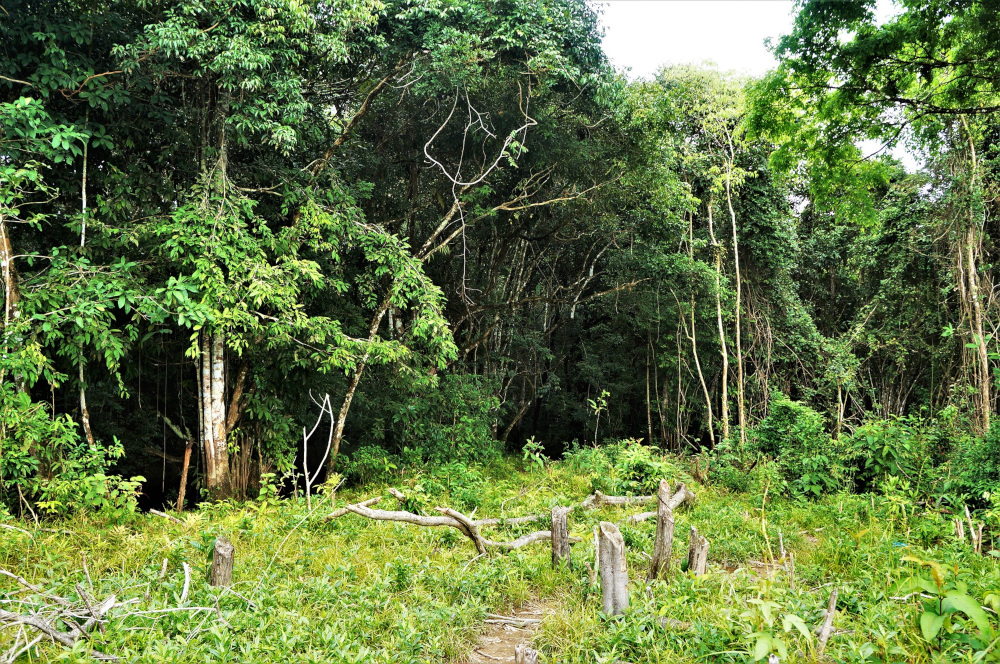
And a “Rights of Nature” movement, firmly grounded in holistic indigenous worldviews like that of the Koreguaje, has been gaining steam around the world, especially in Colombia. But the actual impact of any shift away from anthropocentrism remains to be seen.
Broad legal frameworks, such as the Colombian constitution and international environmental, human and indigenous rights accords and declarations, are an important component in protecting vulnerable indigenous people like the Koreguaje, especially if governments are held accountable. Unfortunately these agreements often neglect distinct indigenous worldviews and the unique circumstances communities deal with on a daily basis.
The recent “Leticia Pact,” developed in response to international uproar over rising deforestation rates, is an example of a broad-brush regional agreement, among seven Amazonian countries, aimed at coordinated forest management. But most Koreguaje leaders I spoke with this past year were unaware of the details of the pact, and when they learned more, they were skeptical about its implementation and upset that indigenous communities had not been properly consulted or included. They also felt the pact failed to respect their autonomy.
These are common contentions of indigenous people, whose rights and worldviews are consistently marginalized while the “Western world” goes about its unsustainable business.
Community-based Research and Projects
A more open collaboration between researchers and indigenous leaders could be powerful.
Scientists, in particular, have much to gain by understanding the more “sustainable models” that underlie the traditional practices and knowledge of indigenous people. Conversely, introducing scientific tools that support communities’ autonomously determined needs could help protect their traditions, knowledge and capacity to monitor, adapt and defend against threats. I, and other researchers, have gained a great deal of knowledge and perspective by working with the Koreguaje, while helping them to implement techniques and projects to increase resilience and preserve traditions.
To Koreguaje leaders, though, any project is relatively superficial when it doesn’t fortify the connection between the increasingly disconnected tribal youth and the culture’s dying traditions.
As the displaced Koreguaje leader Juven Piranga told me, “Without the roots, the tree won’t grow.”
Piranga expressed fears that the impending deaths of the few remaining wise elders could also spell the death of the Koreguaje culture.
Supporting efforts to document and transmit the unique circumstances, knowledge, language and traditions of the Koreguaje and other critically threatened cultures should be of high priority to researchers and citizens alike.
Possible Economic Alternatives
Indigenous tribes throughout Colombia are being bombarded with propaganda about the economic benefits of opening up their territories to visiting outsiders, and the Koreguaje are no exception.
Colombia’s tourism industry is booming, but unfortunately the message forced upon indigenous leaders is shortsighted and deceptive. Mass tourism, “ecotourism,” and the more niche sectors of “ethnotourism” and “ayahuasca tourism” (ayahuasca, or “yage,” is a sacred traditional hallucinogenic drink for the Koreguaje) all pose high degrees of cultural risk for the Koreguaje and other traditional Amazonian tribes.
More integrated and circular economic solutions that respect and reinforce traditions, autonomy, pride and ecosystems are needed if alternative income sources are to be part of the answer for the Koreguaje. These approaches must still be implemented with caution by those looking to trade with Koreguaje communities, to avoid a dependence on external markets that might lead to the abandonment of other traditional practices.
The preservation and commercialization of directly sourced traditional “crafts” from indigenous communities, especially those made from natural fibers and pigments, holds promise. Profits can be reinvested into community-based-programs that fortify traditions and conserve and regenerate ecosystems where the natural fibers and pigments flourish. Koreguaje women make crafts of deep cultural significance from the fiber of the cumare palm tree, with natural pigments from countless different endemic plants.
Other integrated alternative income options for the Koreguaje — assuming their remaining ecosystems are preserved — could include high-value non-timber forest products that incorporate an intercultural collaboration between modern agroecological models and traditional farming practices. Their neighbors, the Muina-Murui, are already incorporating these models.
From the consumer side, supporting integrated and circular socioeconomic systems has the potential of making positive impacts within vulnerable communities like the Koreguaje.
Solutions Through Systems Thinking
The imminent risk to, and potential disappearance of, the Koreguaje and their surrounding ecosystems must no longer be viewed as an isolated circumstance. It’s caused by systemic problems and has cumulative consequences. As an international community, we must think more in systems, as the Koreguaje do, if we are to fully appreciate the importance of their culture and territory.
The devastating loss of the Koreguaje would mean the loss of countless generations of accumulated knowledge, traditions and practices developed sustainably within their ancestral lands. This loss will be felt throughout the region. The degradation of the Orteguaza River will continue to have basin-scale impacts on the increasingly threatened downstream ecosystems of the Amazon. Mass-scale deforestation in Caquetá threatens irreversible biodiversity loss, while contributing to the Amazon’s march toward the tipping point of becoming a carbon source. The Koreguaje have demonstrated their ability to protect the forests of their territories, and neither they nor the interconnected living planet can afford to lose any more.
The opinions expressed above are those of the author and do not necessarily reflect those of The Revelator, the Center for Biological Diversity or their employees.
![]()

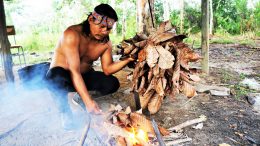
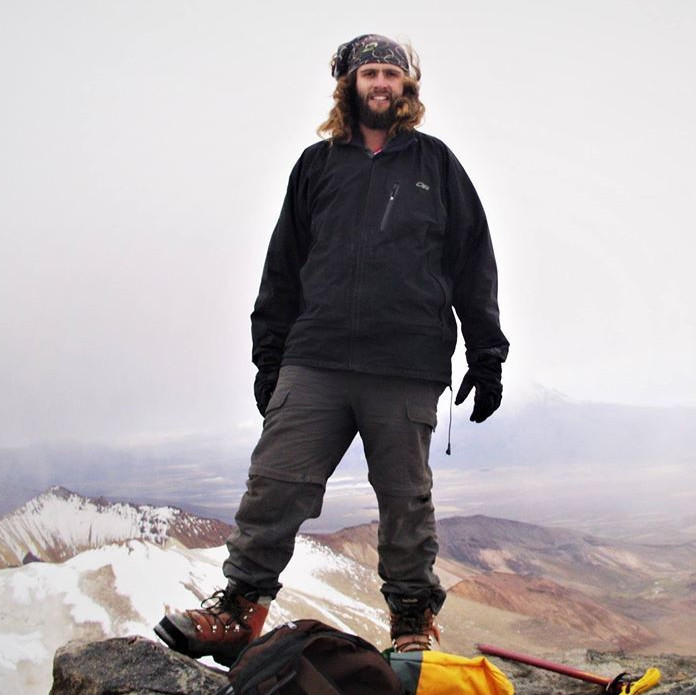
9 thoughts on “The Koreguaje Tribe: Threatened Guardians of the Northwest Amazon”
Comments are closed.